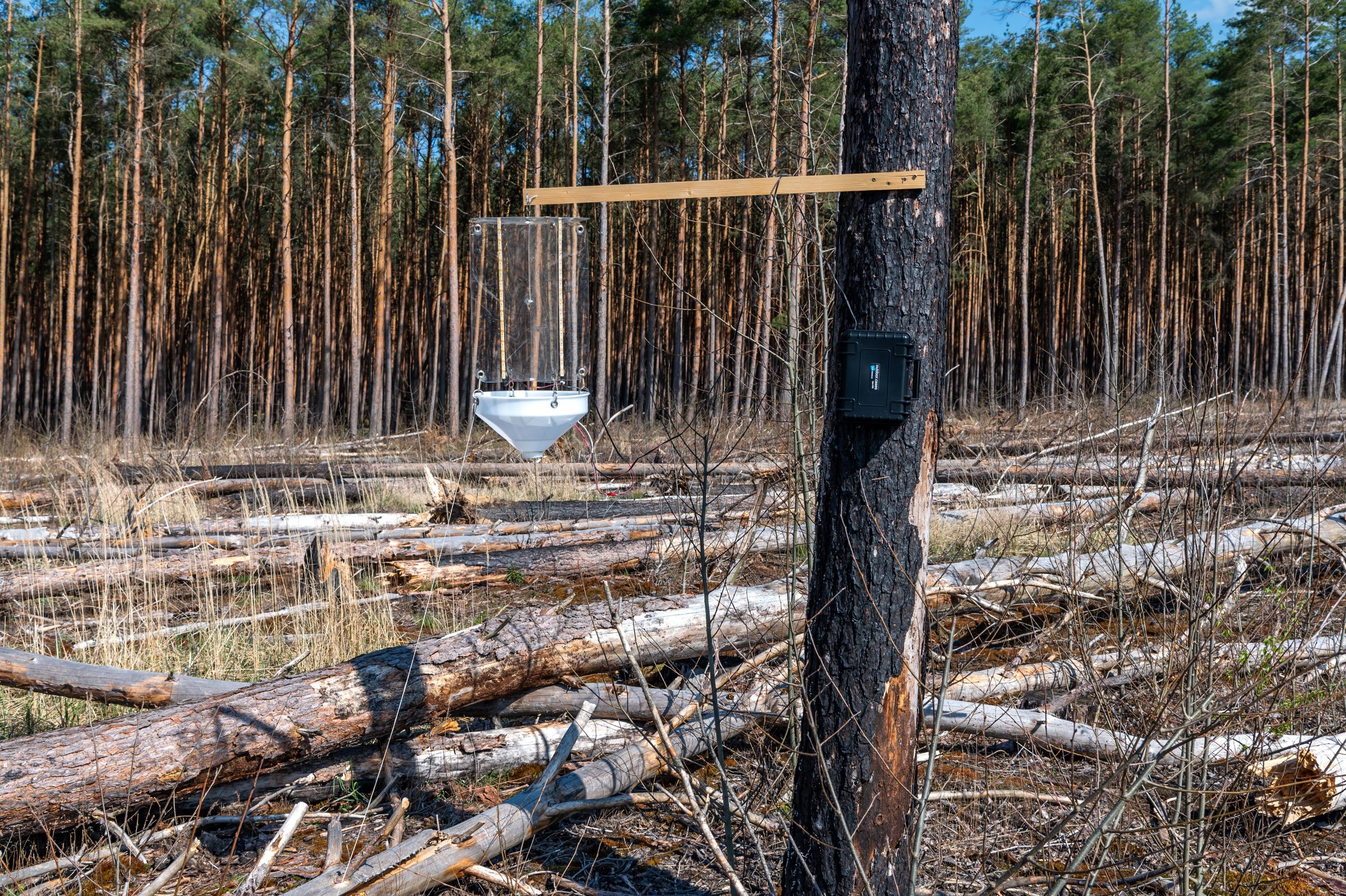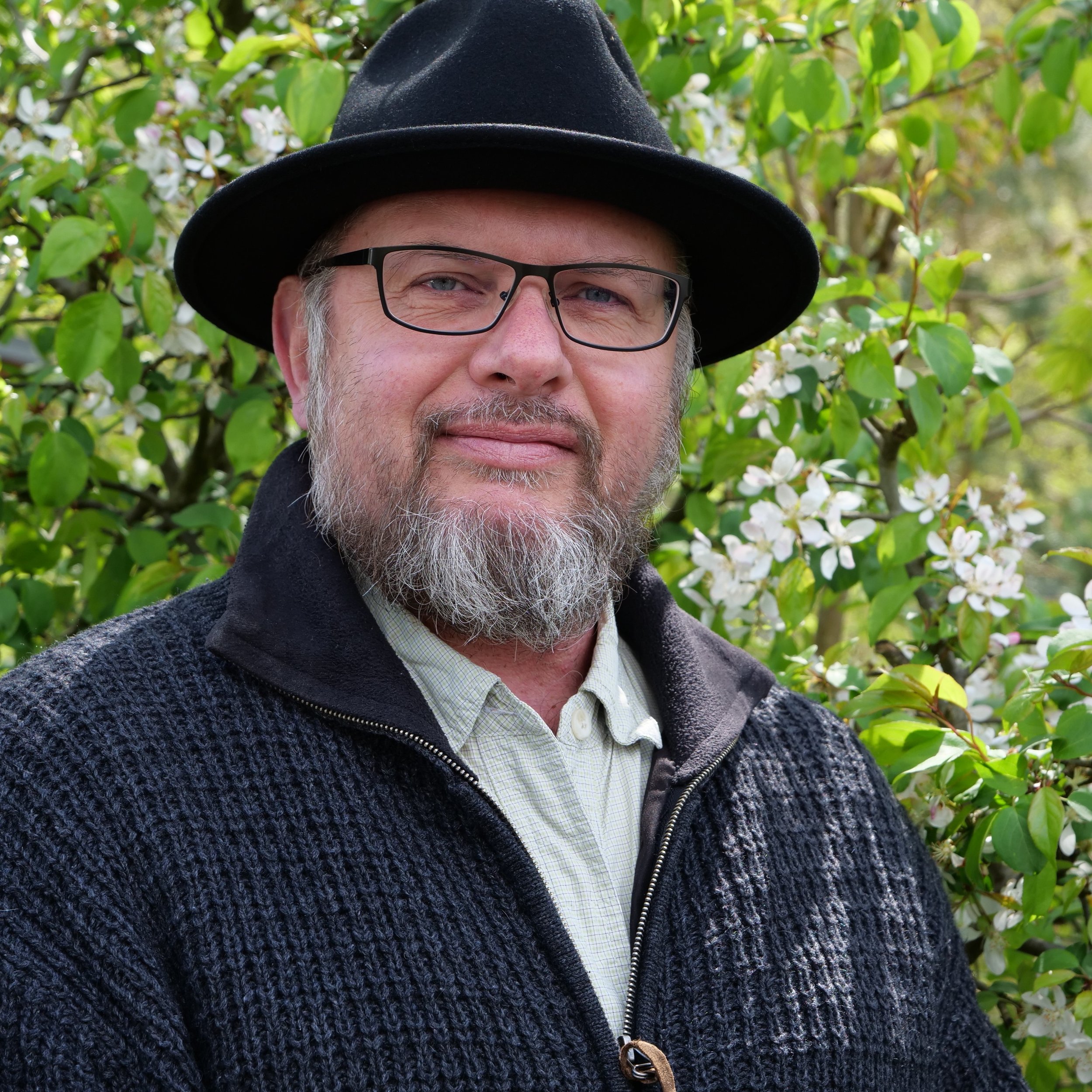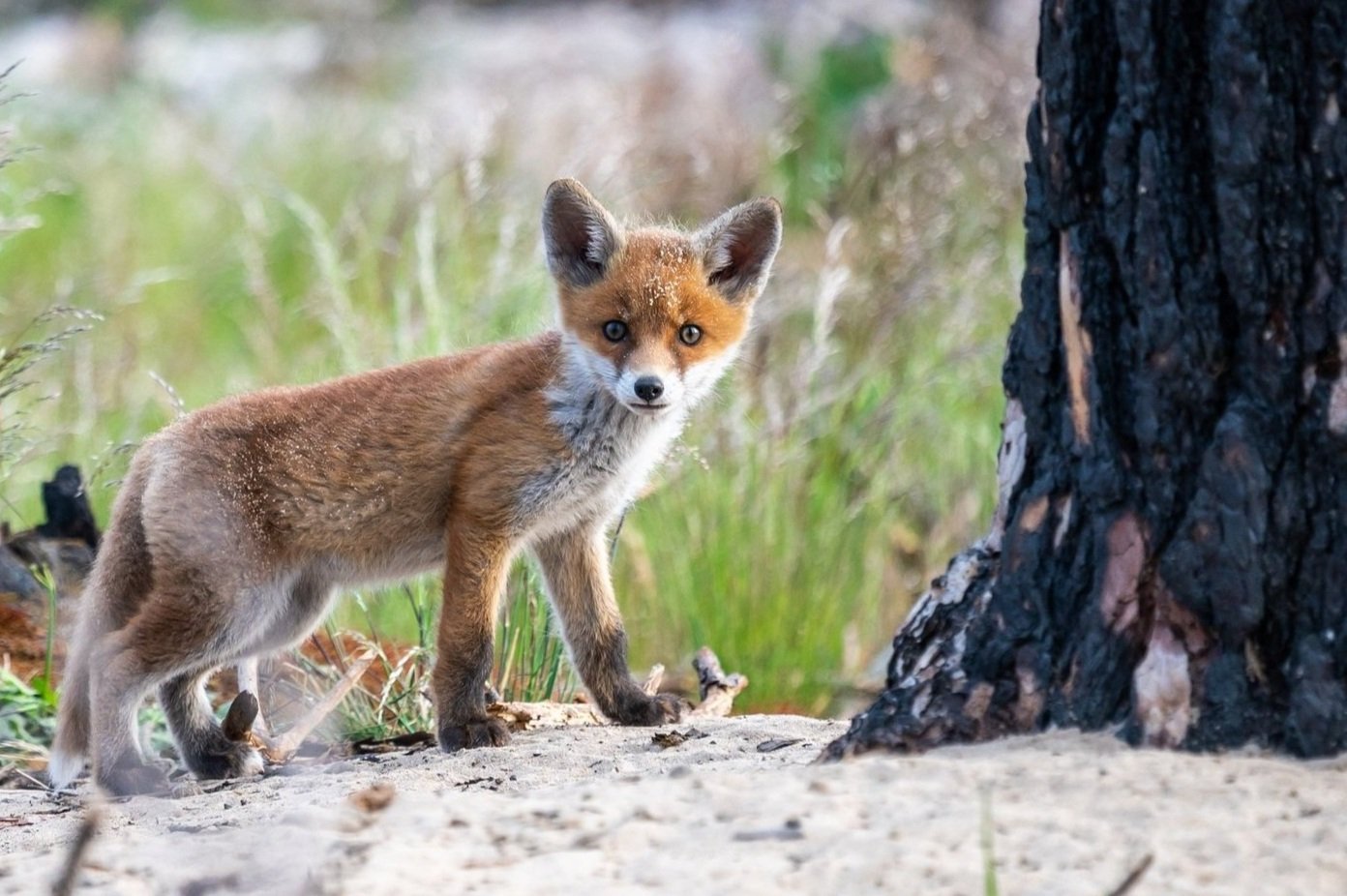
A research project into the forest of tomorrow
Eight institutions investigate how forests can protect themselves from fires and climate change.
Foto: © Dr. Tilo GeiselResearch for fire-resistant forests - the project
Paths to a resilient forest
What does a forest look like that can withstand heat, drought and fires? How does a forest ecosystem develop that remains resilient under the conditions of climate change?
The PYROPHOB ("fire-resistant") research project aims to answer these questions. It is urgently needed: Heat, drought and storms are causing problems for forests in Germany and will tend to increase in future. Forest fires are on the rise.
Holistic research approach
Eight partners from different disciplines are working together on PYROPHOB. They are researching the effects of fire on the ecosystem in a huge "open-air laboratory" on burnt forest areas. The special thing about it: On some areas, the burnt trees were removed, the soil ploughed and young trees planted, on others tree seeds were scattered. Still others are left to themselves and regenerate unaffected by human intervention. The soil and its water balance, the colonisation of plants and fungi, the occurrence of animals, tree growth and the development of the microclimate are being investigated.
Research questions include: How does it affect the soil when forest fire areas are cleared and driven over? What does this mean for the microclimate, the moisture of the soil and its ability to store water? How does it affect the colonisation of different tree species and other plants, animals and fungi? And what does it look like on areas that have not been cleared?
Models for the forestry of the future
The realisation that coniferous monocultures are too fragile to be a promising model for the future of forestry has already become established. The comparative observation of the PYROPHOB research areas can provide information on how to create mixed deciduous forests as quickly as possible that have a balanced microclimate, store a lot of moisture - and are therefore "pyrophobic". The project will ultimately result in recommendations for the regeneration of areas damaged by forest fires.
All photos on this page: © Dr Tilo Geisel
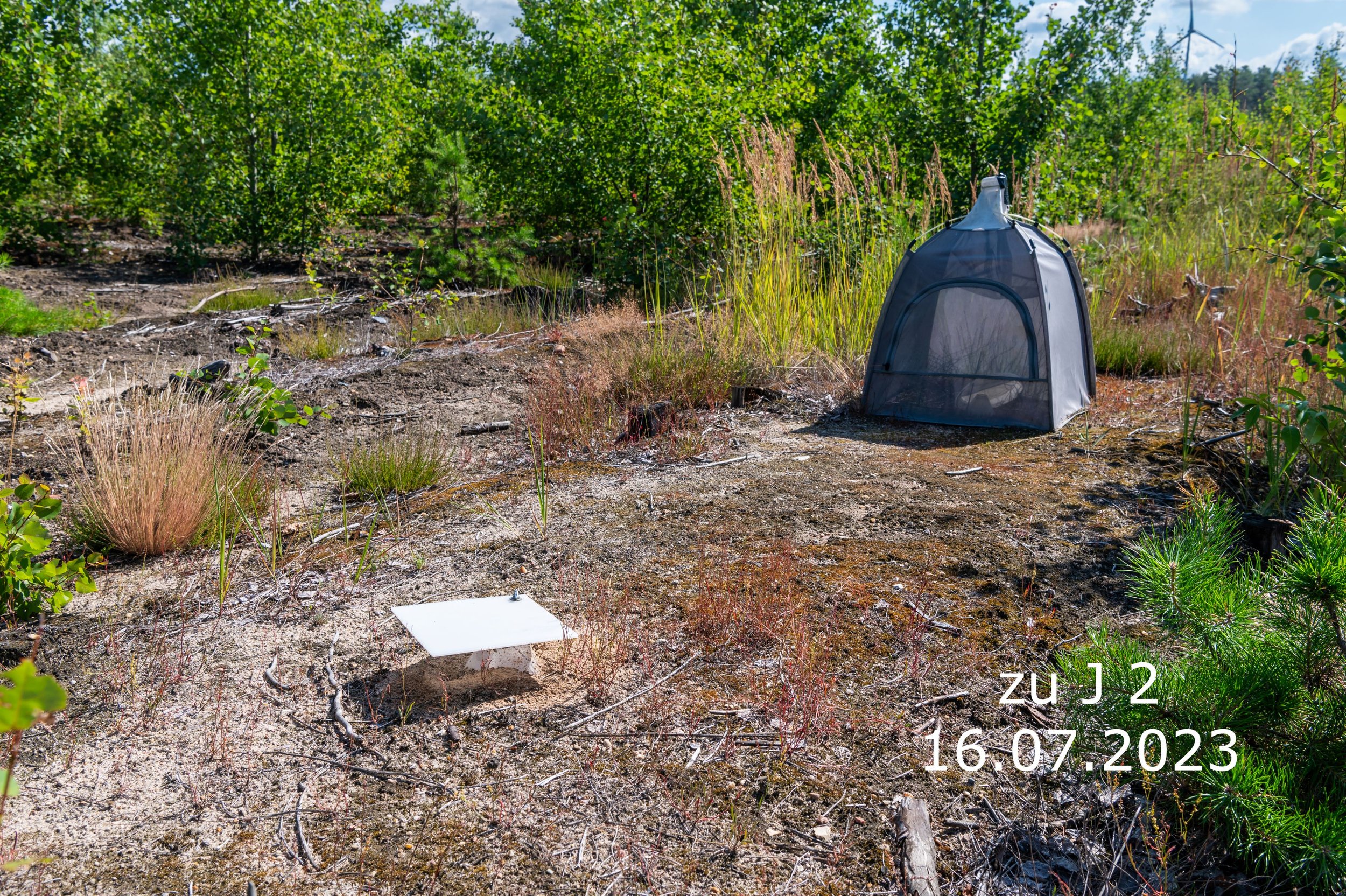
Research in the open-air laboratory - The sites
Overview
The study areas are located in the south of Brandenburg, one of the driest federal states. They are characterised by pine forests on sandy and poor sites.
Both areas are contaminated with munitions. For this reason, the project included considerable resources for munitions sounding and clearance in order to minimise the risk during the research work.
In Treuenbrietzen alone, around 1.500 kg of explosive ordnance and around 3.700 kg of ammunition metal scrap were recovered from 13.3 hectares.
Sampling design
After the fire, the study areas were treated differently. This is where the PYROPHOB researchers picked up at the start of the project in May 2020.
In total, there were 15 treatment variants (treatments), each with 10 sample plots, three of which were so-called main sample circles (VIP = Very Important Plot).
Measurements of abiotic and biotic factors were taken at each plot.
Treuenbrietzen
Forest fires in 2018 and 2022
Burnt area in 2018 around 400 hectares
Total size of investigation area approx. 47 hectares
Private forest cooperative sub-area: large-scale felling and clearing of burnt trees, soil cultivation and planting of various tree species (I, J, H) in 2018
Treuenbrietzen municipality sub-area: Dead trees were partly left standing, partly different tree species were sown or young trees were planted (C, D, E, F); two areas with natural succession (B, K)
Unburnt reference area (G)
Sale of the communal forest in May 2022, designation of a new reference area after another fire in June 2022 (L)
Jüterbog
Forest fire 2019
Total size of the investigation area approx. 18 hectares
Burnt area around 800 hectares, largest forest fire in Brandenburg for decades
Owned by the Brandenburg Natural Landscapes Foundation - The Wilderness Foundation
Study areas are left to natural regeneration, i.e. natural succession, no tree felling (U, V, Z, X, Y)
Unburnt reference area (Z)

Partners
The holistic approach makes PYROPHOB a special project. The eight partners are each working on a sub-project.
Contact
We are available for questions, information and suggestions. You can find the contact persons for the individual sub-projects here.
Prof. Dr. Pierre Ibisch
Professor for Nature Conservation
Centre for Econics and Ecosystem Management Hochschule für nachhaltige Entwicklung Eberswalde
Project leadership
Dr. Antje Bischoff
Stiftung Naturlandschaften Brandenburg
Wilderness Foundation
Public relations
0331-7409322
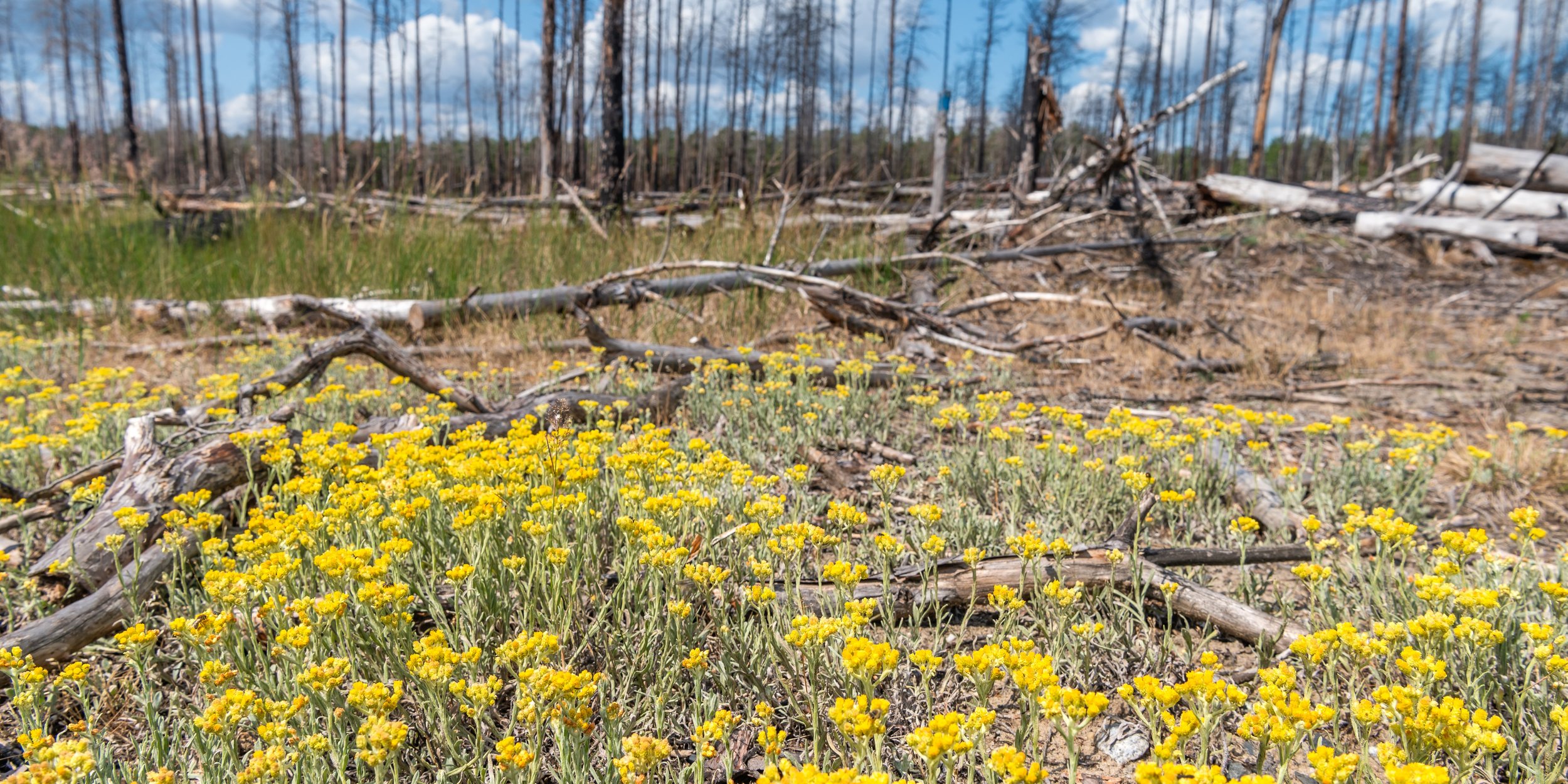
Press & News
PYROPHOB in a documentary film
The research project can now be seen in the film "Der Waldbrand" by Klaus Tümmler.
October 15th 2023
Interview with Dr. Antje Bischoff
PYROPHOB: Erforschung feuerabweisender Wälder im Zeitalter der Klimakrise
August 14th 2023
Another forest fire in Treuenbrietzen - first assessments from the scientific community
Statement von Prof. Dr. Pierre Ibisch, Dr. Jeanette Blumröder, Anja Binder
June 19th 2022
PYROPHOB at the Galileo Conference
"Fire effects on the Earth's surface in space and time: perspectives for future fire management"
PYROPHOB researchers presented their joint project to an international audience of experts at the international EGU Galileo conference GC9-Fire.
April 1st 2022
All photos on this page: © Dr Tilo Geisel
All photos on this page: © Dr Tilo Geisel
Media reports
PYROPHOB in the press, radio and television
“Brandwald bei Treuenbrietzen - Eigentümer schmeißt Waldbrand-Forscher raus”
Article, MAZ+, October 12th 2023
“Die weiteren Aussichten: Feuerwetter in Deutschland”
Article, Spektrum, July 27th 2023
“Sollte man den Wald einfach in Ruhe lassen?”
Article, FAZ, July 6th 2023
„Rückschlag für die Waldbrandforschung”
TV programme, 3sat Nano, June 29th 2022
„Wälder für den Klimaschutz”
TV programme, ARD Mittagsmagazin, June 28th 2022
„Da brennt kein Wald”
Article, taz Online, June 26th 2022
„In Brandenburg brannte ein Millionenprojekt, das ausgerechnet der Waldbrandforschung dienen sollte. Wie konnte das passieren?”
Article, Stern Online, June 24th 2022
“Germany's forests: Rising from the ashes”
Radio feature, Deutsche Welle, June 24th 2022
„Forschung in Flammen: Der Wald brannte genau dort, wo Waldbrand untersucht wurde”
Article, GEO Online, June 23th 2022
„Waldbrände in Brandenburg: „Leben auf einem Pulverfass“ – Brandwachen sollen Lage im Blick behalten”
Article, Münchner Merkur Online, June 22th 2022
„Wir haben uns die Forstbrandgefahr selbst geschaffen"
Article, Spektrum der Wissenschaft, June 22th 2022
„Ich halte die Lage für sehr gefährlich“
Ein Gespräch mit Prof. Pierre Ibisch
Radio feature, Deutschlandfunk, June 22th 2022
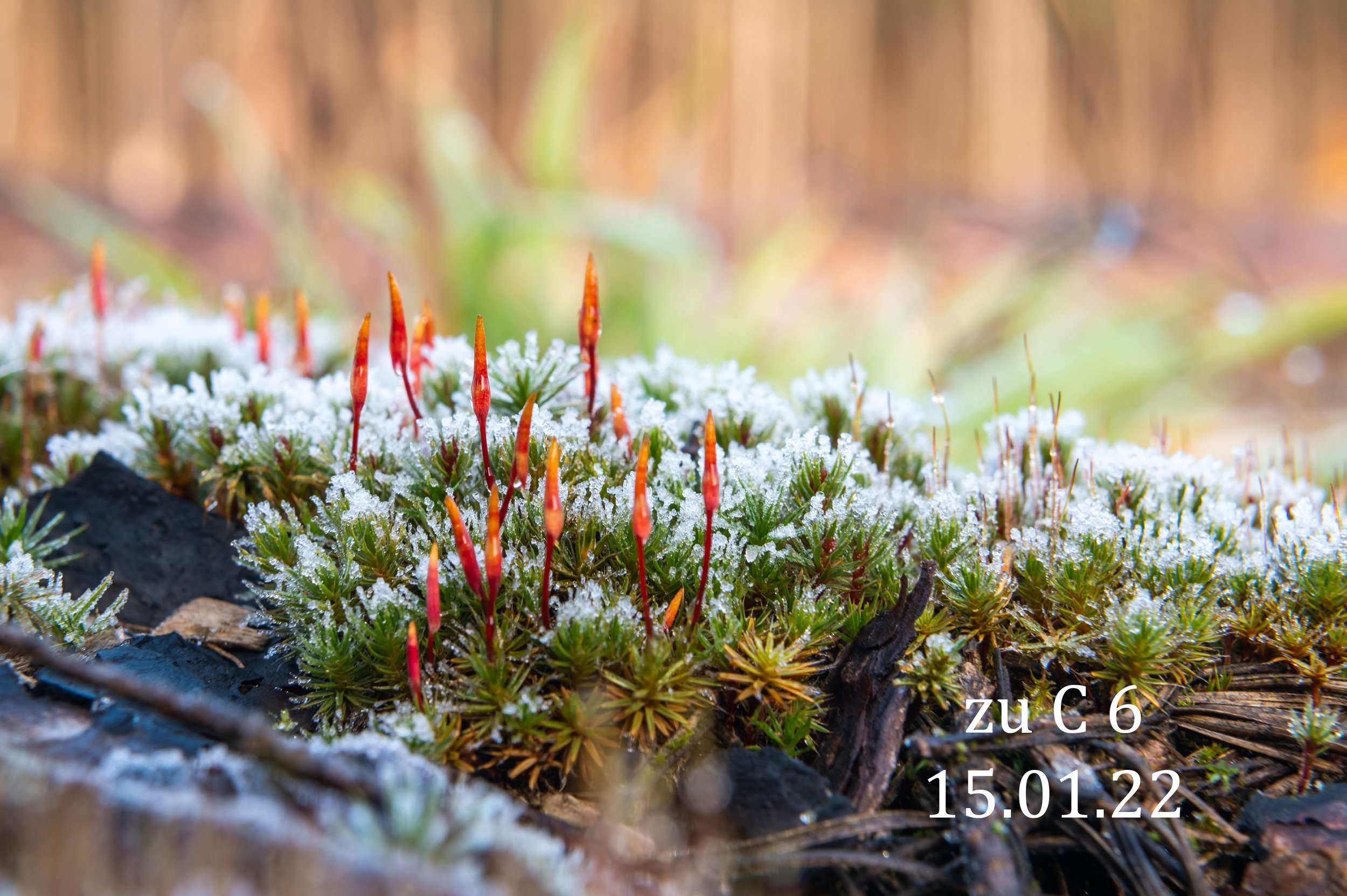
Results
From the data collected so far, initial trends can be recognised as to how forest fire areas will develop in subsequent years. Selected results are shown here.
Pioneers on burnt areas
In 2020, typical colonisers of burnt areas were detected on the study sites in Treuenbrietzen and Jüterbog. These include, for example, various species of fungi and mosses.
Scientific photomonitoring
Four times a year, the Wilderness Foundation photographs the same section of a plot in each study area. The images document the collapse of burnt stands and the recolonisation of the areas, particularly by poplars and birches.
Deadwood after forest fires
The Eberswalde State Centre of Competence for Forestry and the Eberswalde University for Sustainable Development carry out deadwood studies.Stands develop differently depending on the severity of the fire.
Fungi first: Fungi on forest fire areas
The Johann Heinrich von Thünen Institute of Forest Genetics is analysing the fungi on the forest fire areas. A team of volunteers from the Pilzkundliche Arbeitsgemeinschaft Berlin-Brandenburg (PABB e.V.) is involved in the survey. The picture varies from year to year.
Vegetation - flourishing life after the fire
The University of Potsdam is analysing the vegetation. A forest fire initially leads to greater diversity: more plant species can be found on the burnt areas.
Wildlife and forest fires
The Natural Forest Academy carries out wildlife monitoring on the forest fire areas. The animals are recorded using wildlife cameras, aerial photography and thermography. Foxes and hares are sighted particularly frequently.
Burnt soil and the consequences
The Brandenburg University of Technology Cottbus-Senftenberg is investigating the effects of forest fires on the soil. Large parts of the humus layer were destroyed by the fires near Jüterbog and Treuenbrietzen.
Forestry treatment and soil moisture
Suitable temperature conditions and sufficient water are important for the establishment and growth of plants. In order to determine the influence of various forestry treatments, scientists at the University of Potsdam are measuring soil moisture and temperature at several depths.
Forestry treatment and microclimate
The Eberswalde University for Sustainable Development is analysing the influence of forestry treatment on the microclimate. Microclimatic factors such as temperature and humidity are analysed in relation to the degree of canopy cover.
Worthy woodboring beetles on forest fire areas
The woodboring beetle fauna is being analysed by Büro Umland on behalf of the Eberswalde University for Sustainable Development. The rich supply of deadwood on the forest fire areas provides high-quality habitats for a species- and individual-rich deadwood beetle fauna.





